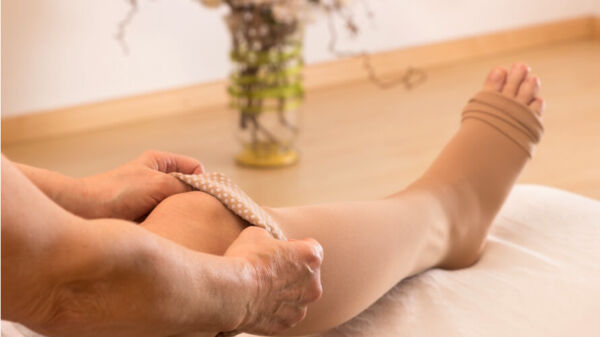
For most individuals, it comes with excitement and anticipation—and for some, a little nervousness, too. For most people, the prospect of healthy legs and the improved confidence of wearing shorts or dresses makes it all worthwhile.
Knowing that you're in the best hands in vein care today at Center for Vein Restoration can put your mind at ease. Our vein physicians are highly trained and board-certified experts in vein treatment. Our staff strives to maintain a friendly, comfortable atmosphere, helping ease any jitters and making your journey toward healthy, beautiful legs a positive experience.
Keeping the treated area clean and following specific instructions from your Center for Vein Restoration provider is crucial. Regular follow-up appointments allow your vein doctor to monitor your progress and ensure your recovery is proceeding smoothly.
You may resume normal activities immediately, but you might experience discomfort and bruising along the course of the treated vein. The bruising may be extensive in the thigh but typically resolves in about two weeks.
If you need to take something for pain relief, we recommend starting with 400mg of Ibuprofen (that is, Advil®, Midol®, or Motrin®) every six to eight hours with food. If you cannot take non-steroidal anti-inflammatory drugs due to an allergy or other medical condition, taking Acetaminophen (Tylenol®) instead, up to 500mg every 12 hours, is acceptable.
If the pain you're experiencing seems severe (for example, you can't sleep or walk) and not relieved with the recommended medications, please call our office for further assistance.
Because the vein is healing, any additional force may cause the treated vein to reopen. We recommend waiting seven to 10 days before resuming exercise such as running, weightlifting, or cycling. We also recommend not lifting anything over 20 lbs. during this time. Until then, a modified workout is recommended:
Our vein procedures are performed in a sterile environment to reduce the risk of infection. The risk of developing an infection because of these procedures is extremely low; however, to further reduce the risk, we ask that you don’t use pools, hot tubs, or bathtubs for seven to 10 days after a vein procedure.
Showering is fine, but we ask that you wait 24 hours after your procedure before you remove the Ace wrap we applied during your vein procedure.
Understanding what to expect post-vein procedure can provide a sense of comfort. From recovery times to potential sensations, these insights into what you can expect after spider vein treatment help you prepare for a confident and comfortable healing process.
If you notice warmth or redness in the leg that's associated with severe pain, fever, or increased swelling in one leg that's new, please reach out to us.

Most people find any residual symptoms from the procedures, such as numbness, discoloration, and hardened areas, have resolved or been significantly reduced at this point in the healing process.
Venous insufficiency is a chronic disease. We eliminated the diseased veins initially seen to be refluxing (i.e., not moving the blood properly). Still, because of the progressive nature of vein disease, new veins may become dysfunctional over time. This is why we provide surveillance and monitoring services to our patients. We recommend reevaluation at the one-month, six-month, and one-year points post-procedure. After the first year is complete, you'll need annual follow-up appointments.

Healing after foam sclerotherapy is relatively straightforward. However, following our post-procedure instructions is essential to have the best vein care experience possible.
Wear compression stockings to aid blood circulation and minimize swelling. Walking regularly can help maintain healthy blood flow. Avoid strenuous exercises and activities that could strain the treated veins. Protect the treated areas from direct sunlight and use sunscreen to prevent potential skin damage. Gently clean and moisturize the treated skin as directed by your Center for Vein Restoration vein specialist. Following these instructions and attending follow-up appointments will ensure proper healing and enhance the success of your visual sclerotherapy treatment.